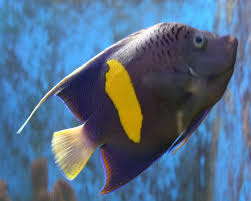The Relationship Between the Chinese Dragon and Dragon Traditions in Other Countries

Dragons have been an important symbol across various cultures for millennia, with each culture presenting its unique interpretations and attributes. The Chinese dragon, one of the most revered and ancient symbols in Chinese culture, stands out not only for its mythical power and benevolent qualities but also for the profound influence it has had on dragon traditions in other countries. While the Chinese dragon is fundamentally different in its representation compared to dragons in other parts of the world, the archetype of the dragon as a powerful, mystical creature has transcended borders, intertwining with the myths, legends, and traditions of numerous cultures.
This article will explore the relationship between the Chinese dragon and the dragon traditions in various other countries, particularly in East Asia and beyond. By examining the similarities, differences, and cultural exchanges between these traditions, we can gain a deeper understanding of the dragon as a symbol of power, protection, and divine influence throughout human history.
1. The Chinese Dragon: Symbolism and Cultural Significance
The Chinese dragon, known as long (龙), is fundamentally different from its Western counterparts in both form and significance. In Chinese culture, the dragon is a benevolent and auspicious creature associated with power, prosperity, and good fortune. It is often depicted as a serpentine being with the features of various animals, including the horns of a deer, the body of a snake, the claws of an eagle, and the scales of a carp. The dragon is also considered a symbol of the emperor’s authority and divine protection.
The Chinese dragon is a representation of the natural and cosmic forces that govern the world, including water, wind, and rain. In traditional Chinese beliefs, the dragon controls the rain and is an essential figure in ensuring agricultural prosperity. It is also seen as a protector of the people, often linked with deities, such as the Dragon King, a god who reigns over bodies of water and the weather.
In Chinese New Year celebrations, dragon dances are performed to drive away evil spirits and bring good luck for the upcoming year. The dragon, with its long body and rhythmic movements, symbolizes vitality, strength, and harmony with the universe. The Chinese dragon is also a symbol of unity and national pride, often representing the Chinese people as a whole, referred to as the “descendants of the dragon.”
2. Dragons in Japanese Culture: Influence and Differences
In Japan, dragons share some similarities with the Chinese dragon, but there are also notable differences. While the Japanese dragon, or ryu (竜), is often modeled after the Chinese dragon, it is distinct in its own right. Japanese dragons are typically portrayed as three-clawed, unlike the Chinese dragon, which has five claws. Additionally, Japanese dragons are often associated with water, particularly rivers and seas, as opposed to the Chinese dragon, which is also linked to the sky and the weather.
In Japanese folklore, dragons are frequently depicted as benevolent beings that bring rain and good harvests, similar to the role of the Chinese dragon. However, they are often more associated with the protection of sacred sites and temples. One notable example is the dragon in the Shinto religion, where it is regarded as a guardian spirit. The Japanese dragon, like the Chinese one, is seen as a divine protector, often appearing in stories of local gods and heroes.
The influence of Chinese dragon symbolism on Japanese culture can be traced through the historical spread of Buddhism from China to Japan. Many of the dragon-related myths and stories found in Japanese literature have roots in Chinese mythology. For instance, the story of the Ryujin, the dragon god of the sea in Japanese mythology, shares similarities with the Chinese Dragon King. Ryujin is said to control the tides and storms, a parallel to the Chinese dragon’s ability to govern the weather.
3. Dragons in Korean Culture: Symbolism and Role
In Korea, dragons, or yong (용), are also considered auspicious symbols of power, protection, and good fortune, closely resembling the Chinese dragon in many respects. The Korean dragon is often depicted with a long, serpentine body, and like its Chinese counterpart, it is a creature of nature, capable of controlling the weather, particularly rain. The Korean dragon is often associated with the imperial family, with ancient kings claiming descent from dragons as a way to assert their authority.
The Korean dragon is particularly important in the royal context. It is considered a symbol of the king’s authority and divine right to rule. The dragon, known as the Yongwang or Dragon King, also appears in Korean myths and folktales, where it is a symbol of strength, wisdom, and immortality. Similar to the Chinese dragon, the Korean dragon is believed to bring peace, good harvests, and protection from natural disasters.
One notable cultural similarity is the role of the dragon in Korean art and architecture, especially in the design of palaces and temples. Much like the Chinese, Korean royal palaces were adorned with dragon motifs to symbolize imperial power and divine protection. The Korean yong also appears in sculptures, paintings, and textiles, reflecting the deep influence of Chinese dragon traditions.
4. Dragons in Vietnam: Cultural Interactions with China
In Vietnam, the dragon, or rồng, plays a crucial role in the country’s folklore and mythology, much like its Chinese counterpart. Vietnamese dragons are said to bring prosperity, protection, and good fortune. Historically, the Vietnamese people regard themselves as descendants of dragons, a belief that links them to Chinese mythology and culture.
Vietnamese dragons share many similarities with Chinese dragons in appearance and symbolism. However, the Vietnamese dragon has been adapted to reflect local traditions. The dragon in Vietnam is often associated with water, agriculture, and the natural environment, just as in China. The story of the founding of Vietnam, in which the first Vietnamese king was said to be born of a union between a dragon and a fairy, highlights the connection between the Vietnamese people and the dragon as a symbol of national identity.
The influence of Chinese dragons in Vietnam can also be seen in religious practices and festivals. The dragon dance during the Lunar New Year celebrations is common in both China and Vietnam, though it is adapted to local customs and traditions. Vietnamese New Year celebrations feature dragon dances to ward off evil spirits and bring good fortune to families and communities.
5. Dragons in Other Southeast Asian Countries
Beyond East Asia, the Chinese dragon and its variations have also influenced Southeast Asian cultures, particularly in countries like Thailand, Cambodia, and Laos. In these countries, dragons are often depicted in art and architecture, serving as symbols of power, protection, and fertility. For instance, in Thai culture, the dragon is known as the naga, and it is frequently associated with water and the monsoon rains. Similar to Chinese and Southeast Asian traditions, the naga is a protector deity, guarding sacred sites and temples.
In Cambodia, the dragon plays an important role in local mythology, with stories of dragons that control the rivers and bring prosperity to the land. The Khmer Empire, for example, used dragon motifs in its architecture, including the famous Angkor Wat temple, which features intricate dragon carvings that reflect the power of the monarchy.
6. Dragons in Western Culture: A Contrasting View
In contrast to the benevolent, auspicious Chinese dragon, dragons in Western mythology are typically portrayed as fearsome creatures that threaten humanity. In European myths, dragons are often depicted as monstrous beings, hoarding treasure and terrorizing villages. These dragons are frequently slain by heroic knights, such as in the legend of St. George and the Dragon.
However, the relationship between Western dragons and the Chinese dragon has been evolving, especially in modern pop culture. The Chinese dragon is often admired for its elegance and spiritual significance in Western representations, such as in films, literature, and video games. The distinct nature of the Chinese dragon, with its symbolism of harmony and prosperity, contrasts with the more fearsome image of Western dragons, creating an interesting cultural juxtaposition.
7. Conclusion: A Global Dragon Tradition
The relationship between the Chinese dragon and dragon traditions in other countries reveals a complex and interconnected web of cultural exchanges, transformations, and adaptations. The dragon, as a symbol of power, protection, and prosperity, transcends cultural boundaries, appearing in a wide variety of forms and serving different roles in each culture.
While the Chinese dragon remains a symbol of benevolence, wisdom, and good fortune, its image has influenced and been integrated into the myths, art, and traditions of other countries. From Japan and Korea to Vietnam and Southeast Asia, the dragon continues to play a pivotal role in shaping cultural identities and expressing universal themes of protection, strength, and divine influence. As globalization continues to connect cultures and societies, the Chinese dragon’s influence will undoubtedly remain a powerful symbol that unites East and West, offering a common thread of symbolism and mysticism that spans the world.

